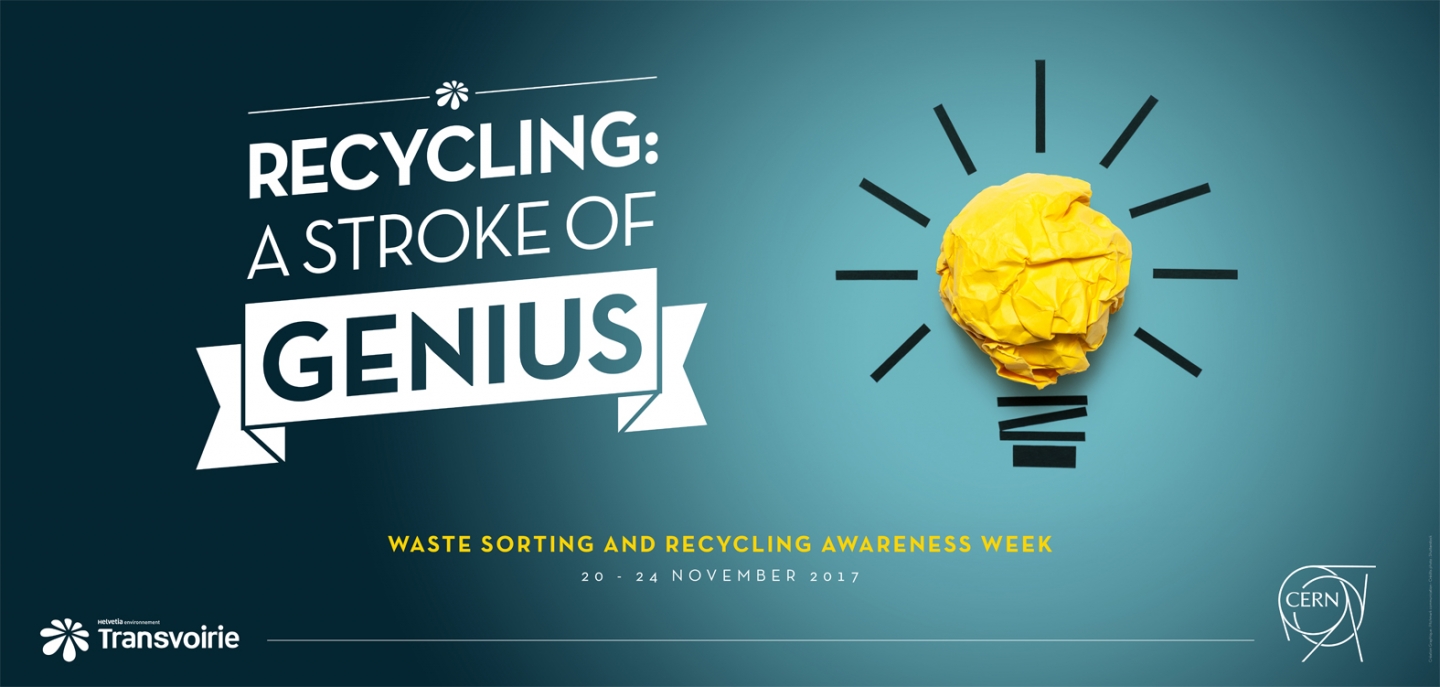This week, come and learn about how waste is sorted and recovered in the Main Building (500), where the contractor responsible for collecting waste at CERN*, in partnership with the SMB department, will explain how to sort waste at CERN for optimal recycling. We can all make a difference, however small, to help protect the environment, so get involved!
What is recycled?
Paper, cardboard, PET, aluminium cans, glass, Nespresso capsules, wood and worksite waste: in 2016, CERN produced no less than 5700 tonnes of waste, about 50% of which was recycled. How can we improve on this? With your help! Numerous waste containers, skips and bins for recyclable materials are provided on the CERN sites – please use them!
In particular:
- Every office has a paper/cardboard recycling box.
- Recycling bins for PET items, aluminium cans and Nespresso capsules are available throughout the CERN sites**. Several skips for these kinds of waste have also been installed near Building 156 (Meyrin site) and Building 904 (Prévessin site).
- 19 recycling containers for glass bottles are spread out across the Meyrin and Prévessin sites.
- For larger volumes, skips ranging from 4 to 40 m3 in volume are available.
Moreover, to facilitate the recycling of worksite waste, any firm working for CERN can make use of the waste collection service. To promote the use of this service, we have established a procedure for informing worksite managers about CERN’s waste sorting and recycling policy. This service ensures better traceability of CERN’s worksite waste and a reduction in the amount of waste that is not sorted for recycling, as such waste is now separated out at the source into the different categories (wood, inert waste, scrap metal, etc.), which was very difficult before.
CERN’s waste is sent to a recycling plant in Switzerland, where it goes through a second, more thorough, sorting process. Each different type of waste then goes through the appropriate recycling or recovery process: paper/cardboard is recycled into new paper; used wood can, for example, be used to make chipboard; scrap metal goes to steelworks; glass can be used in the manufacture of glass wool; certain plastics can be recycled into polystyrene, etc.
What is incinerated?
Waste to be incinerated (including the domestic waste collected by the cleaning service) is disposed of in containers outside each building. This waste is then sent to a recycling plant in Switzerland, where any potentially recyclable materials are extracted. The remaining non-recyclable waste is then sent to a Swiss incineration plant located near CERN, where it is converted into electrical and thermal energy.
What about the restaurants?
At the moment, not enough recycling bins are provided in the Novae restaurants at CERN. To address this issue, five recycling stations for the disposal of household waste, PET items and compostable coffee cups will be installed in Restaurant 1. Other recycling solutions will be implemented gradually in CERN’s restaurants. Glass bottles and organic waste are already recycled by Novae staff in the kitchens.
Of course, it’s not enough just to throw your rubbish into a recycling bin; please make sure you put each material in the correct bin - this is essential!
(In particular, please note that plastic cups are not PET.)
*The firms responsible for waste sorting and treatment were selected by means of a tender process using the criteria of proximity to the site, with a view to minimising CO2 emissions resulting from transport.
**For more information on sorting and recycling at CERN, please see the SMB department’s website.

